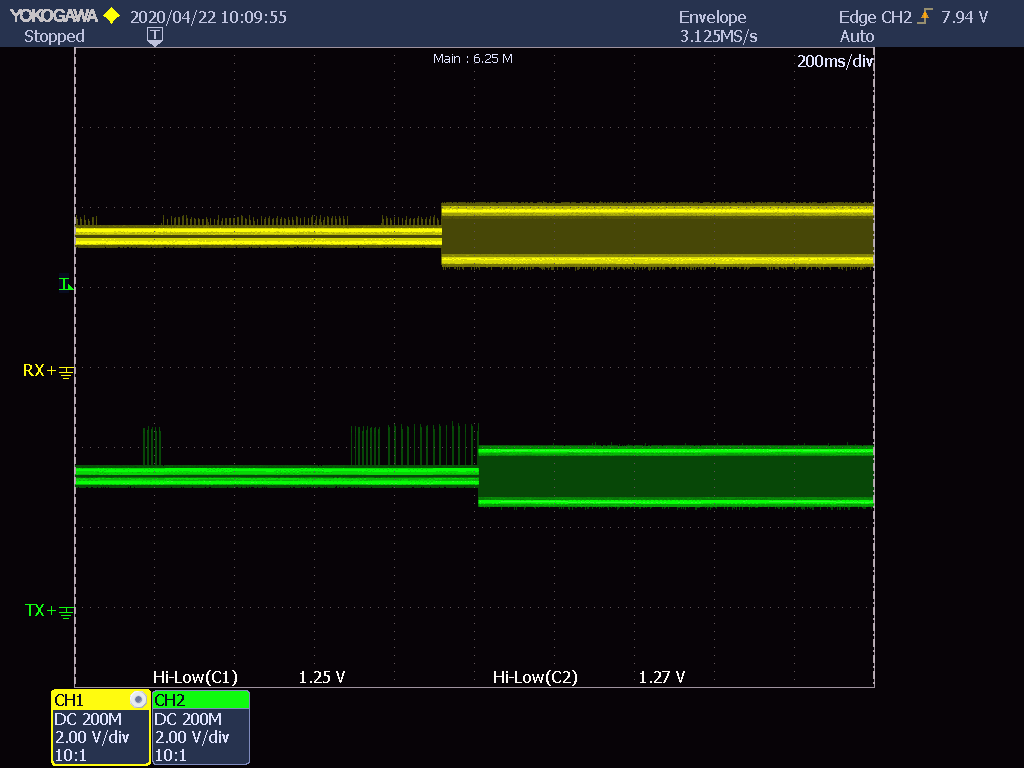Hi,
I'm having trouble with the DP83848I to establish a link.
-
The communication partner is one factor. I tried different Network Interface Cards and switches: the success of establishing a valid link varies between 5% and 100%.
-
The success rate between specific devices from one production batch also varies strongly.
So I took a closer look at the status registers:
-
BMSR: Basic Mode Status Register
-
PHYSTS: PHY Status Register -
ANLPAR: Auto-Negotiation Link Partner Ability Register -
ANER: Auto-Negotiate Expansion Register
What I found out so far:
-
After plugging in an Ethernet cable, nothing happens with regard to the status registers:
BMSR:0x7849 / PHYSTS:0x0000 / ANLPAR:0x0000 / ANER:0x0004$
BMSR:0x7849 / PHYSTS:0x0000 / ANLPAR:0x0000 / ANER:0x0004$
BMSR:0x7849 / PHYSTS:0x0000 / ANLPAR:0x0000 / ANER:0x0004$
BMSR:0x7849 / PHYSTS:0x0000 / ANLPAR:0x0000 / ANER:0x0004$
-
When I pull the plug, the Auto-MDIX functions starts swapping the MDI pairs (
PHYSTS:0x4000means "MDI pairs swapped"):BMSR:0x7849 / PHYSTS:0x0000 / ANLPAR:0x0000 / ANER:0x0004$
BMSR:0x7849 / PHYSTS:0x4000 / ANLPAR:0x0000 / ANER:0x0004$
BMSR:0x7849 / PHYSTS:0x0000 / ANLPAR:0x0000 / ANER:0x0004$
BMSR:0x7849 / PHYSTS:0x0000 / ANLPAR:0x0000 / ANER:0x0004$
BMSR:0x7849 / PHYSTS:0x0000 / ANLPAR:0x0000 / ANER:0x0004$
BMSR:0x7849 / PHYSTS:0x4000 / ANLPAR:0x0000 / ANER:0x0004$
BMSR:0x7849 / PHYSTS:0x0000 / ANLPAR:0x0000 / ANER:0x0004$
BMSR:0x7849 / PHYSTS:0x4000 / ANLPAR:0x0000 / ANER:0x0004$
-
Now if I put in the plug again, the MDI swapping stopps again. If the MDI-swapping was in the "right" state I'm lucky and I get link. If not, removing and inserting the plug will eventually result in a link.
I double checked the schematics and the PCB layout but can't find any mistakes. Any ideas what could cause this behavior?
Regards,
Florian



